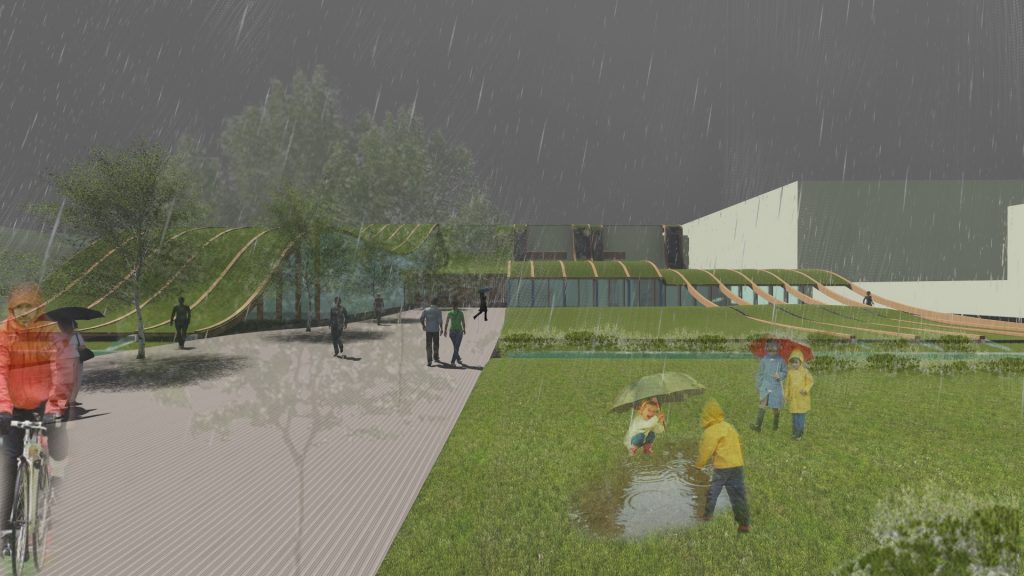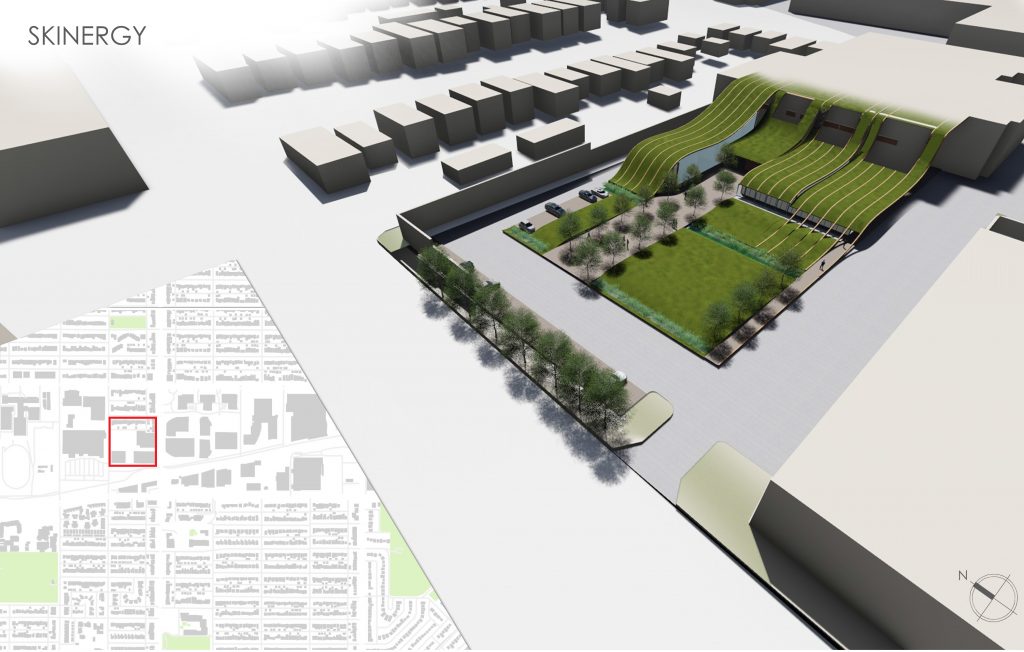
Design for wellness:
Vancouver rain could be cold and depressing, perhaps the design intends to celebrate this event by visually connecting with it. This is achieved by filtering light and views of landscape through integration of baffles and transparencies for mental well being. program is orchestrated as s flexible space with minimum spatial barriers. This is manipulated with an interior skin that establishes a long corridor guiding to the areas of displays, sit outs while acting as a space for interaction. The undulating movement of skin and the granular substrate of green roof should help in marginal sound absorption for the workshop areas.
The landscape is imagined as an introduced pocket park for communal engagement and wellbeing.
Design for Resources:
The design intends to reduce the impact on environment by using cross laminated timber as a sustainable construction material acknowledging its high carbon sequestration and comforting properties. The material will undergo prefabrication in the workshop which then will be fabricated on site with Robotic application for desired precision and material use efficiency. The entire process is determined to be environment friendly and cost efficient.
Along with that, the exterior green skin is aimed to increase carbon sequestration and reduce energy loads. The layers of wood and granular substrates will act as an insulation to provide thermal comfort during winter and relative cooling during summer.
The below calculation determines the amount of carbon sequestered and its equivalency at larger scale.
Volume of wood used: 742345 Cu.M
Volume of CO2 stored: 6004 Metric ton
Area of landscape installed: 3675 Sq.M
Volume of CO2 stored : 473 Metric ton
Net volume of CO2 stored : 6477 Metric ton
Equivalent to 3521 cars off the road per year
This calculation uses following references.
- Local case study comparison & number reference (Stella by DesignARC)
- Carbon footprint calculator
Source: http://www.carboncalculator.ncsu.edu/
Design for water:
The design aims to celebrate rain water by reveling it as a landscape feature for visual /physical engagement and wellness. The proposed wooden skin incorporates wooden channels that drive the rainwater from the roof top and the excess water from the green roof into the on-ground landscape. This landscape is a manipulated topography that integrates with the existing grade to tackle water movement across the site. This movement is then slowed down with gradual slopes to allow percolation further channelling it through swales for relative purification. The design assumes to have an underground cistern to collect this water for non-potable use.
Non-pervious receiver (Roof top of Lassalle college): 4216 sf
Introduced soft landscape (External green skin): 3674 sf
Hard landscape (pathways and driveways) :2427 sf
Swales + Underground cistern: 1000 sf








